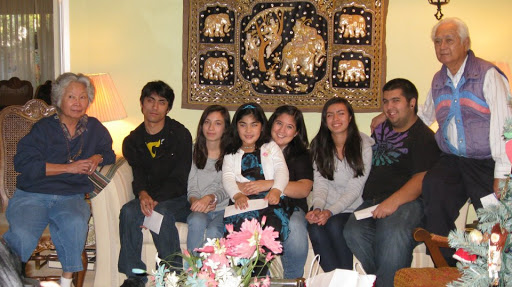I have published more than 7500 articles in my blog since 2008. But two of the articles I really enjoyed writing are: The Ylang-Ylang Tree and its Essential Oils and Funny and Sexy Names of Places in the World . Here is an update of the first article I titled "The Best Smell of My Life".

Ylang-Ylang flowers in my backyard, Chateau Du Mer, Marinduque, Philippines
This article was inspired by a question of a friend in Facebook-regarding the best smell one has experienced. Mine is the smell of the blooming Ylang-Ylang trees in my garden at Chateau Du Mer, Boac, Marinduque, Philippines. I have two big mature trees in the backyard of Chateau Du Mer that are about 19 years old.
When the trees are in bloom, you can smell the fragrance of it flowers to as far as 50 meters and even farther if the wind direction is favorable. It is one fragrance, that I will never forget at Chateau Du Mer in Marinduque. Its reminds me of the perfume, Channel No.5.
The fragrance of ylang-ylang is rich and deep with notes of rubber and custard, and bright with hints of jasmine and neroli. The essential oil of the flower is obtained through steam distillation of the flowers and separated into different grades (extra; 1; 2; 3) according to when the distillates are obtained. The main aromatic components of ylang-ylang oil are benzyl acetate, linalool, p-cresyl methyl ether, and methyl benzoate, responsible for its characteristic odor.
On the subject of Ylang Ylang Oil, I am proud to inform readers of this blog that my Master’s degree thesis was the Analysis of the Volatile Constituents of Ylang Ylang Oil by Gas Chromatography. This was published in the
I believe not too many non-Filipinos have heard of this tree and it fragrant flowers. Here’s a short information from Wikipedia for your reading pleasure.
Cananga odorata, commonly called Ylang-ylang (pronounced /ˈiːlæŋ ˈiːlæŋ/, EE-lang-EE-lang), cananga tree, ilang-ilang, kenanga (Indonesian), fragrant cananga, Macassar-oil plant or perfume tree), is a tree valued for its perfume. The essential oil derived from the flowers is used in aromatherapy and in the manufacture of perfumes.
Cananga odorata is a fast-growing tree of the custard-apple family, Annonaceae, that exceeds 5 m (15 ft) per year and attains an average height of 12 m (40 ft). It grows in full or partial sun, and prefers the acidic soils of its native rain forest habitat. The evergreen leaves are smooth and glossy, oval, pointed, with wavy margins, and 13–20 cm (5–8 in) long. The flower is drooping, long-stalked, with six narrow greenish yellow (rarely pink) petals, rather like a sea star in appearance, and yields a highly fragrant essential oil.
The Chemical Composition Typical chemical compositions of the various grades of Ylang ylang are reported as follows:
Constituents Linalool, geranyl acetate, caryophyllene, p-cresyl, methyl ether, methyl benzoate, other, sesquiterpenes.
The name ylang-ylang is derived from Tagalog, either from the word ilang, meaning “wilderness”, alluding to its natural habitat, or the word ilang-ilan, meaning “rare”, suggestive of its exceptionally delicate scent. A more widely accepted translation is “flower of flowers”. The plant is native to the Philippines and Indonesia and is commonly grown in Polynesia, Melanesia and Micronesia.
The essential oil of ylang-ylang is used in aromatherapy. It is believed to relieve high blood pressure, normalize sebum secretion for skin problems, and is considered to be an aphrodisiac. According to Margaret Mead, it was used as such by South Pacific natives such as the Solomons where she did much of her research. The oil from ylang-ylang is widely used in perfumery for oriental or floral themed perfumes (like Chanel No. 5). Ylang-ylang blends well with most floral, fruit and wood smells.
In Indonesia, ylang-ylang flowers are spread on the bed of newlywed couples. In the Philippines, its flowers, together with the flowers of the sampaguita, are strung into a necklace (lei) and worn by women and used to adorn religious images.
While
surfing the web, I found the following names unusual, sexy and funny.
There is no particular order in the list. I also listed two places that
are both surnames of my father and mother from the Philippines.
With regards to my wife's mother surname, NIEVA, there is a street named
NIEVA in Makati, Philippines and a bridge, named NIEVA in Gasan,
Marinduque, Philippines.
Sexy Names Indeed!
Sexmoan ( changed to Sasmuan in 1990), Pampanga, Philippines
Tinurian, Iloilo, Philippines ( it means a place for circumcision)
Landi, Santa Cruz, Marinduque, Philippines ( Landi' could mean flirt or whore)
Condom, Gers, France
Fucking, Austria
Bra, Italy
Pussy, France
Cockplay, Scotland
Agay, France
Pennis Wood, UK
Three Cocks, Wales
Blowhard, Australia
Dikshit, India
Titless, Switzerland
Long Dong, Guangxi, China
Weener, Germany
Cocktown, Wexford, Ireland
Onacock, Virginia, USA
Seman, Alabama, USA

Climax, Georgia, USA
More Unusual Names
Paradise, California, USA
Cool, California, USA
Manila, California, USA
Earth, Texas, USA
Jackpot, Nevada, USA
Truth or Consequence, New Mexico, USA
Happy, Texas, USA
New York, Cubao City, Philippines
San Francisco, Agusan del Sur, Philippines
Mexico, Pampanga, Philippines
Chocolate Hills, Bohol, Philippines
Personal Connections
Catague, Bohol, Philippines

Catague is my fathers' surname. When he was in high school he changed it to Katague. Catague is a small town in Central Bohol, near the town of Sevilla. Any
one knows the origin of the Catague name in Bohol, please let me know.
Balleza, Chihuahua, Mexico ( Balleza is my mother's maiden name)
Balleza is a town in Northern Mexico in the province of Chihuahua. The
town is named after Fr. Mariano Balleza, a priest from Bilbao, Spain.
Meanwhile, enjoy this photo of a dozen roses, a gift during Macrine's Waksi the other day from relatives originally from the Philippines





No comments:
Post a Comment